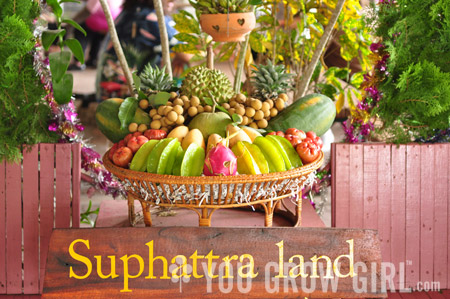
At this time last year I was just home from Thailand and dying (at least it felt like I was dying) from jetlag so severe, it still pains me to think about it. Back in Feb I posted photos of dragon fruit taken at a fruit farm in Rayong, with the promise of more photos from that particular trip. It took me a while to circle back, but here they are.
The first few images in this slideshow are of the tram waiting area where several types of fruit were on display. Once the tram arrived our tour of the farm began with the requisite giant novelty fruit, and a series of appropriately bad, lost in translation jokes made by our tour guide, Mafia Bangkok. That’s him in the bright blue golf shirt, cradling a durian freshly picked off of the tree.
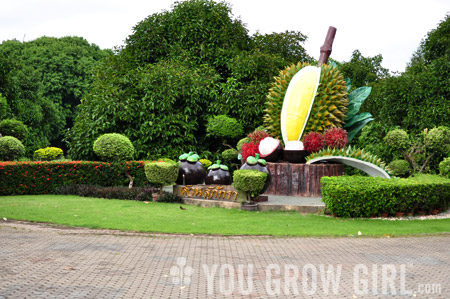
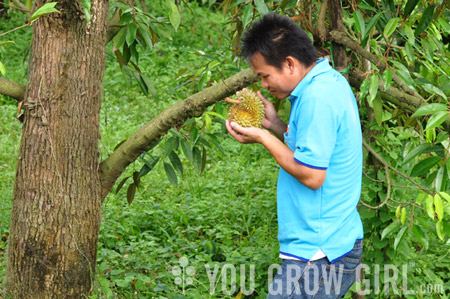
The next few images were taken while the durian was cut open for us to sample. I’d had durian many years before, bought in China Town in my first year in Toronto as a student. Since then I’ve associated durian with stinky cheese or smelly socks, but I was willing to overlook that negative experience knowing that fruit is often much better when eaten moments after picking. I had read before the trip that durian is meant to be eaten within 20 minutes of harvest — the fruit that travels halfway around the world is greatly inferior and not worth the bother. That said, durian does stink something fierce and there are rules in Thailand about bringing it on the bus, into hotels, or god forbid, packing into luggage. Even the durian flavoured candy we bought at a market stank to high heaven and I had to abandon it midway through the trip to preserve the smell of my clothes.
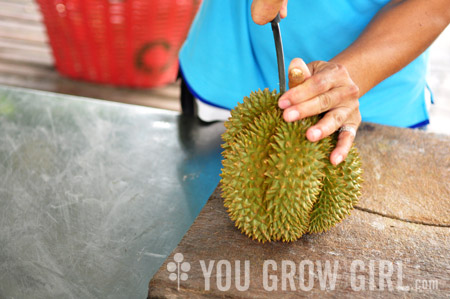
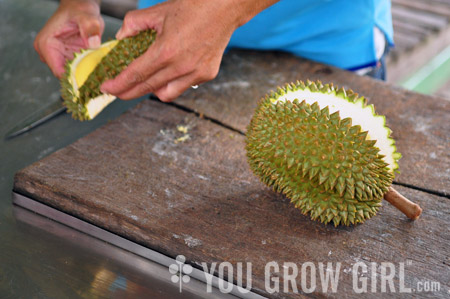
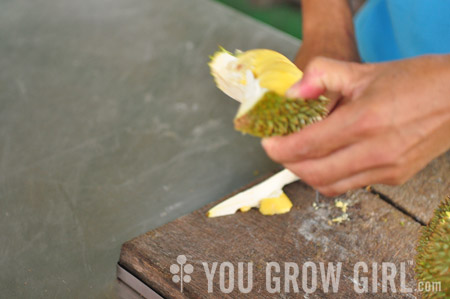
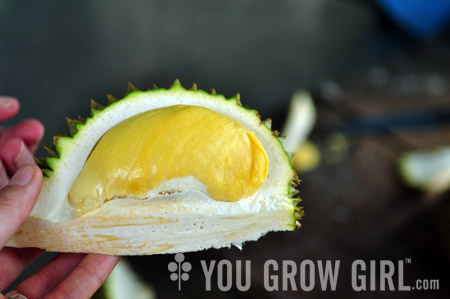
Another interesting fact about durian is its diversity. Here in the West we tend to think of durian as one thing, but there are actually hundreds of cultivars, each with their own unique flavor and fan following. Apparently, if you’re going to enjoy durian, Thailand is the place to do it. I have no idea which cultivar ours was, but it was much smaller than any I have seen here in Toronto. The flesh contained inside the spiny, hard exterior shell was soft and decidedly less stinky cheese-like, too. It reminded me a bit of avocado. It tasted of custard at first and I gobbled up a few pieces before a slightly unpleasant garlicky-onion aftertaste started to appear. I had to stop before it overwhelmed that initial good flavour. I wanted to walk away on a high note so I went on to tasting the other fruits that were presented to us including star fruit, rose apple, papaya, pineapple, longan, and mango, all of which I have tasted before both in the tropics and at home. None of them were any better than I’ve had previously and some were worse due to immaturity. I didn’t try the mango as I am terribly allergic to that particular fruit.
We were able to see a variety of tropical fruit on this trip, but alas, we were just a little bit too early for my very favorite fruit, mangosteen. The mangosteen we did see (shown in the next photos) were very small and underdeveloped. In fact, I was never able to taste mangosteen in Thailand and did not come across it anywhere other than the airport, where a sealed package of underwhelming fruit was more expensive than they are in Asian food stores here in Toronto. I passed.
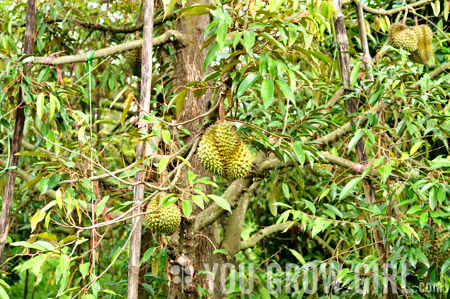
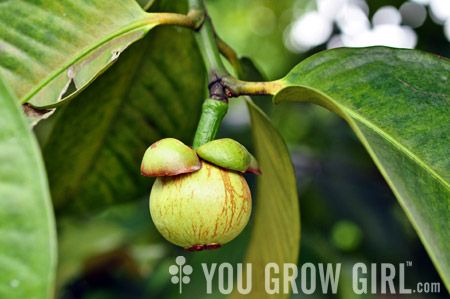
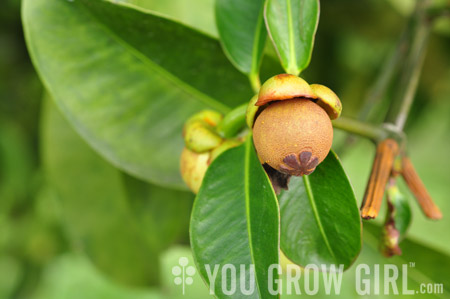
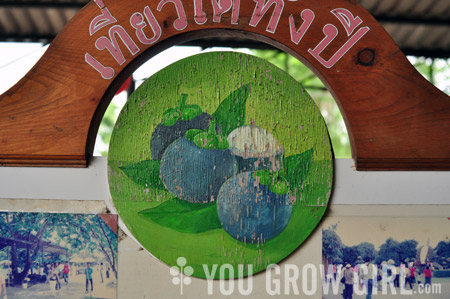
The spiky fruit that appears next is rambutan, again unripe and not yet in season. The fruit is red when ripe. It has a jelly-like center that is reminiscent of lychee. I would have liked to have tried it in Thailand.
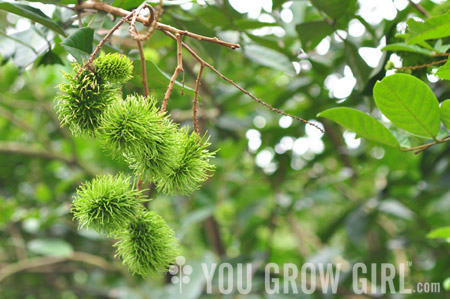
Next up, our fellow garden tour attendee, Kate, stands next to a cluster of jackfruit to demonstrate size. I believe the correct phrase to use here is, “That’s some big ass fruit!”
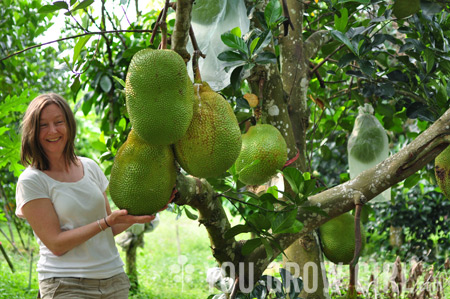
The beige colored fruit that follows are called Long Kong. I eat these regularly at home in Toronto. They taste like grapefruit candies, without the bitterness of a real grapefruit.
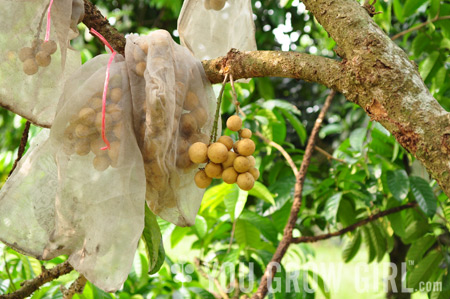
One of the highlights of this tour was seeing rubber trees for the first time and learning about how rubber is extracted from them. Davin could not resist touching a mushy puck of sap and learned that it smells suspiciously of old vomit. It is also very difficult to wash off.
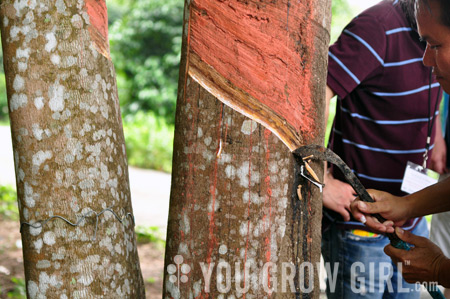
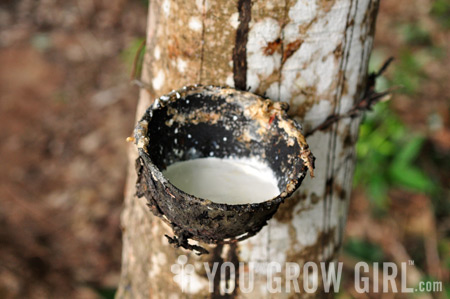
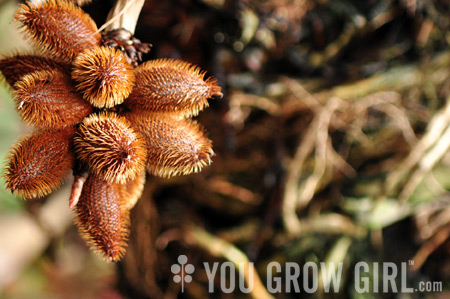
The brownish-red fruit is called salak or snake fruit. I was pleased to discover these in our hotel’s lavishly stocked breakfast buffet on our first morning in Bangkok. The spiny outer shell houses a sweet and tart center that was again, not unlike lychee in terms of texture. I was surprised to learn at the farm that the fruit grows on a very spiny palm tree. I can’t imagine the difficulty in harvesting these in quantity. While standing underneath the trees we were instructed to look up where a very large and open tropical bee hive hung not far above our heads! I saw more and even larger hives like these a day later in Chiang Mai.
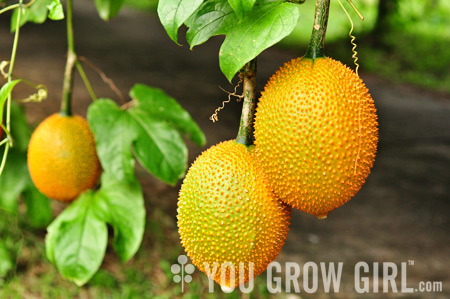
The lumpy, orange melon is Momordica cochinchinensis or as it is commonly called in Thai, Fuk Kao. Yes, it is in fact pronounced as “f-ck cow,” an unfortunate Thai to English pronunciation if there ever was one. This joke was repeated several times on the trip and started to feel as lame as Long Duk Dong in Sixteen Candles, but there you have it.
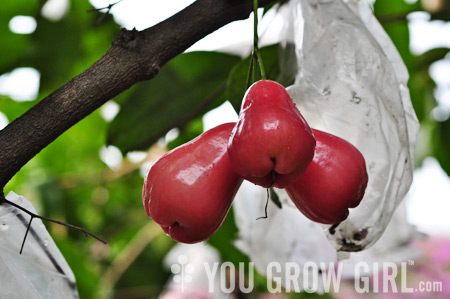
The waxy, red fruit are rose apples. They were my favorite fruit to photograph — the immature apples were so darn cute. Alas, I find the taste was as banal in Thailand as they are here in Toronto. I was underwhelmed.
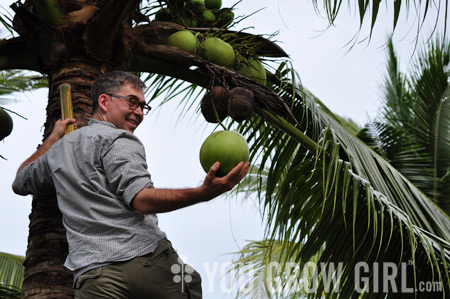
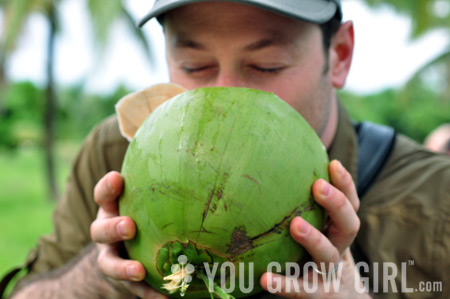
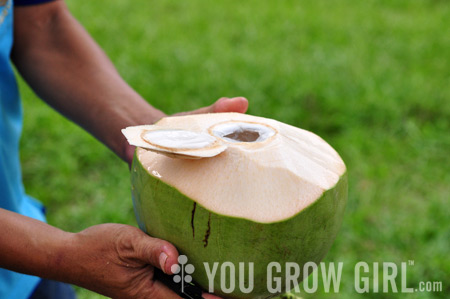
Another enjoyable highlight of this tour was the coconut water tasting. I love coconut water and consider myself a bit of a connoisseur. I have never had as consistently delicious and refreshing green coconuts as I had in Thailand. My experience of green coconuts in the Caribbean has been hit or miss, but in Thailand every single one I bought, regardless of where, was absolutely perfect and often came garnished with an orchid flower to boot. I would get on a plane and suffer through the nightmare of Thailand to Canada jet lag all over again (maybe) if only for the chance to drink my weight in that perfect coconut water.
No comments!?? Well, I loved the photos and descriptions – so interesting and different from what I’m used to in canada! The inside of the durian fruit still looks icky to me. It’s always great to see giant fake fruit!